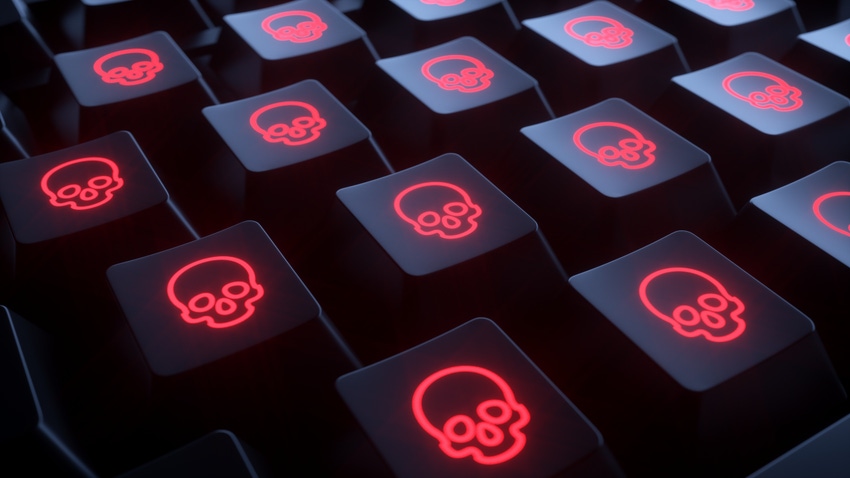Just ahead of its headline-grabbing attack on the Italian tax agency, the infamous ransomware group debuted an improved version of the malware featuring parts from Egregor and BlackMatter.
July 26, 2022

Reverse-engineering the latest ransomware executables from the group behind LockBit shows that the developers have added capabilities from other popular attack tools and are actively working to improve LockBit's anti-analysis capabilities, according to researchers.
This significant evolution, seen in the recently debuted LockBit 3.0 (aka LockBit Black), is likely meant to offset better defenses, a greater scrutiny by researchers and investigators, and competition from other gangs, according to analyses by multiple researchers.
"There is no question that, whether it is law enforcement pressure or the defenders getting better, that we are seeing that these groups are forced to evolve — they have to get better at what they are doing," says Jon Clay, vice president of threat intelligence for Trend Micro.
They also have to keep up with the Dark-Web Joneses. To that end, the latest version now requires a key to obfuscate its main routines and hinders reverse engineering and analysis, for example — a technique used by other ransomware families, such as Egregor, cybersecurity firm Trend Micro stated in an advisory published on Tuesday. The new version of the ransomware program also enumerates available application programming interfaces (APIs), a feature identical to the BlackMatter ransomware program, the company stated.
Ransomware Attack on Italy's Tax Agency
Earlier this month, the Italian Revenue Agency became the latest purported victim of LockBit, with the group boasting that it encrypted and exfiltrated 78 gigabytes of files from the tax agency. If true, the organization will have to find a way to recover, but the attack also threatens Italian citizens, Gil Dabah, co-founder and CEO of data-protection firm Piiano, said via email.
"The second type of victim is the individual whose data was compromised," he said. "In this case, there is a high chance that the data of an individual taxpayer was compromised."
Following Russia's invasion of Ukraine, these ransomware groups have committed to supporting Russia and are increasingly facing requests to conduct operations against nation-state targets, says Paul Martini, CEO of iBoss, a provider of cloud-security solutions.
"The shadow cyber-war between nations that has been carried out through espionage, disinformation campaigns, and strategic attacks on critical targets is just starting to come out of the shadows," he said. "We can expect this to boil over and the West is going to need stronger defenses in place to protect government and civilian targets."
The group behind LockBit has had a good run so far in 2022. Despite an 18% drop in overall attacks, likely due to the disruption of the infrastructure behind the Conti cybercrime group or possibly fallout from Russia's invasion of Ukraine, LockBit has become the most commonly encountered ransomware family, accounting for 40% of all attacks detected by security firm NCC Group in May.
But evolution is necessary to stay on top.
Major Improvements for LockBit 3.0
The changes to the latest version of the LockBit ransomware includes functions that collect system APIs as a way to use legitimate functions as part of its attack and extensive — albeit fairly simple — encryption of configuration data and code, according to Trend Micro's advisory.
Perhaps most notably, a major addition to LockBit 3.0 is a set of features to slow down or prevent reverse engineering. The program includes, for example, a password required to decrypt the main body of executable code and a feature that attempts to crash debuggers.
"They pride themselves on their ability to regularly update their ransomware and ransomware-as-a-service offerings," says Trend Micro's Clay. "There are a lot more obfuscation capabilities in 3.0, and they put in a lot of features that try to minimize how much analysts and researchers can discover about their code."
Meanwhile, the adoption of BlackMatter tactics is unsurprising, given that both LockBit and BlackMatter are Russia-linked groups and cybercriminals are increasingly moving between groups.
The Basics of Ransomware Defense Still Work
For the most part, the new features found in LockBit 3.0 do not undermine current defenses, says Trend Micro's Clay. Multi-factor authentication can block the most common approach to gaining access — through stolen credentials — while modern endpoint detection and response (EDR) can detect and stop and attack before attackers start encrypting data. Finally, having a good backup process for critical data will make recovery easier.
"They [ransomware groups] claim that backups will not help, but if you have a proper procedure then you can recover your data," he says. "The good news is that the defenders have implemented a lot of these best practices, and they seem to be working."
About the Author(s)
You May Also Like
Beyond Spam Filters and Firewalls: Preventing Business Email Compromises in the Modern Enterprise
April 30, 2024Key Findings from the State of AppSec Report 2024
May 7, 2024Is AI Identifying Threats to Your Network?
May 14, 2024Where and Why Threat Intelligence Makes Sense for Your Enterprise Security Strategy
May 15, 2024Safeguarding Political Campaigns: Defending Against Mass Phishing Attacks
May 16, 2024
Black Hat USA - August 3-8 - Learn More
August 3, 2024Cybersecurity's Hottest New Technologies: What You Need To Know
March 21, 2024




